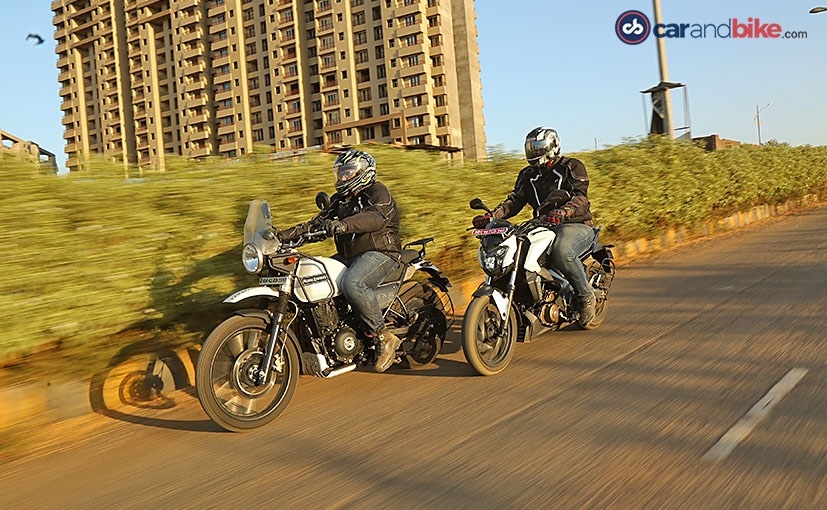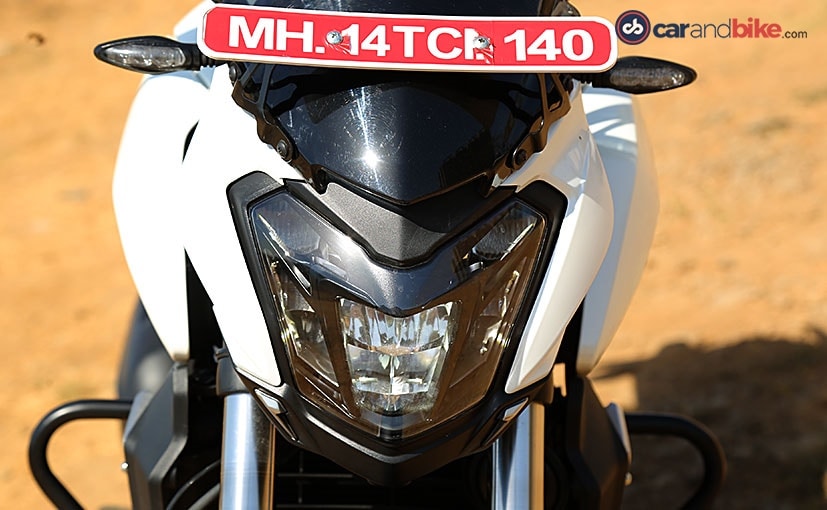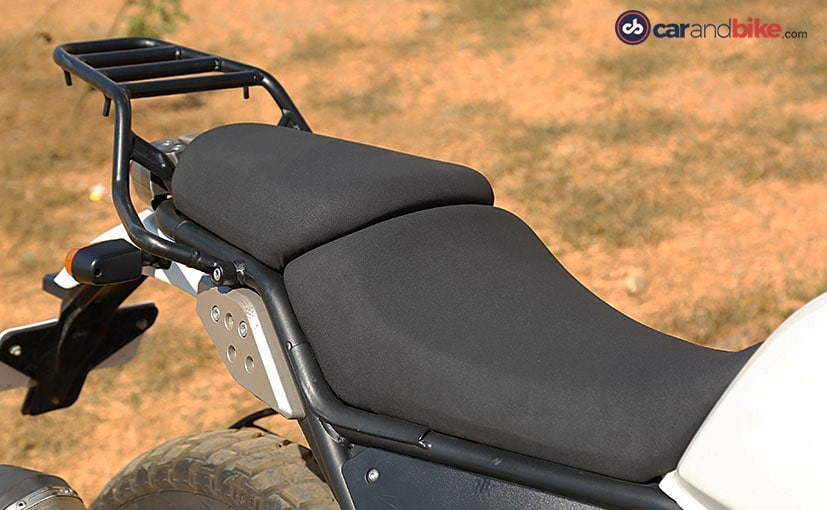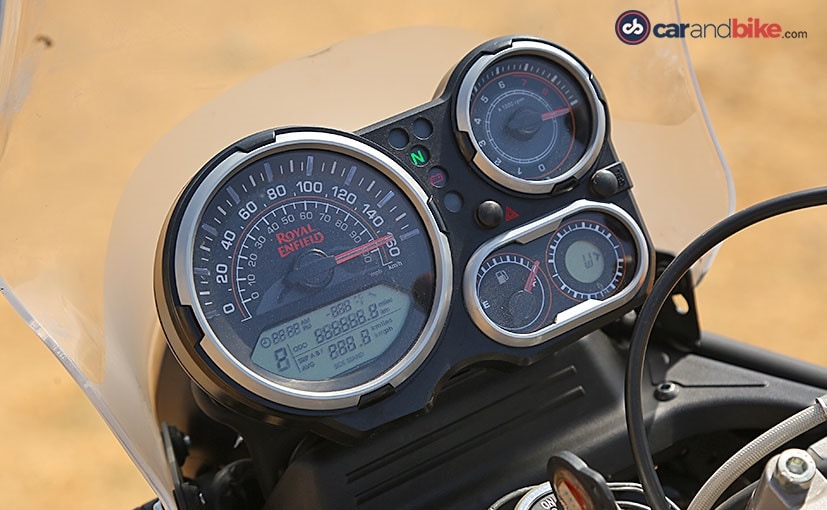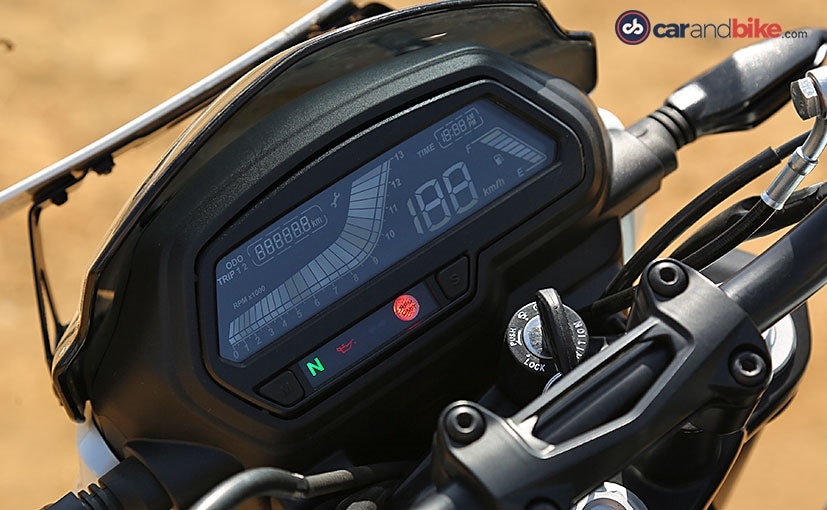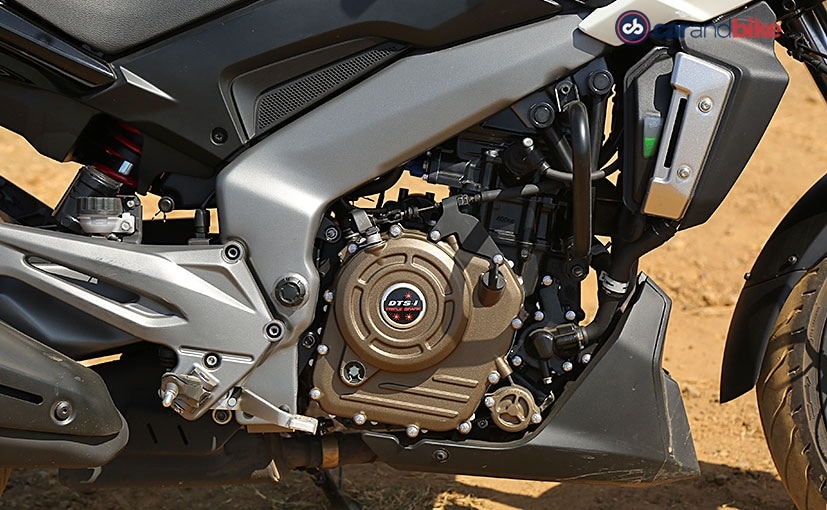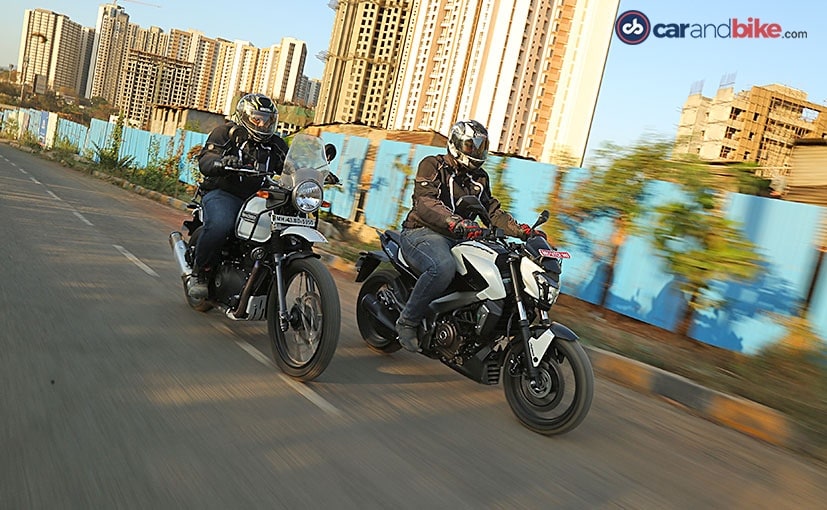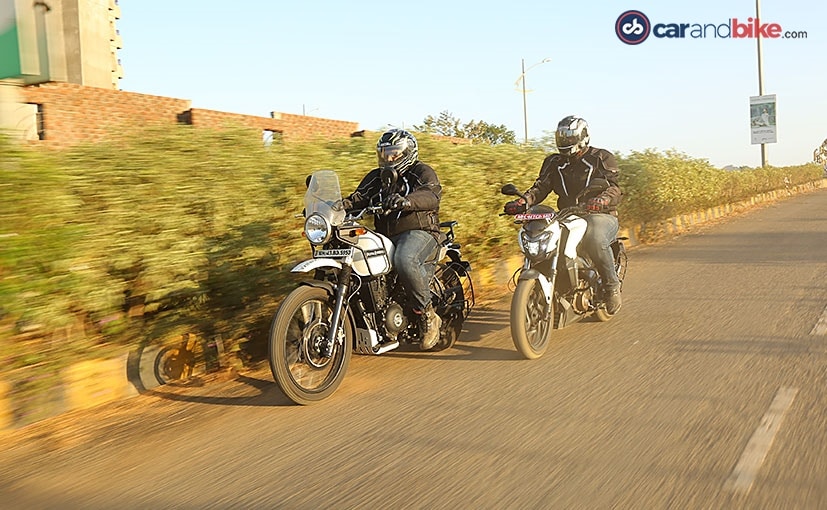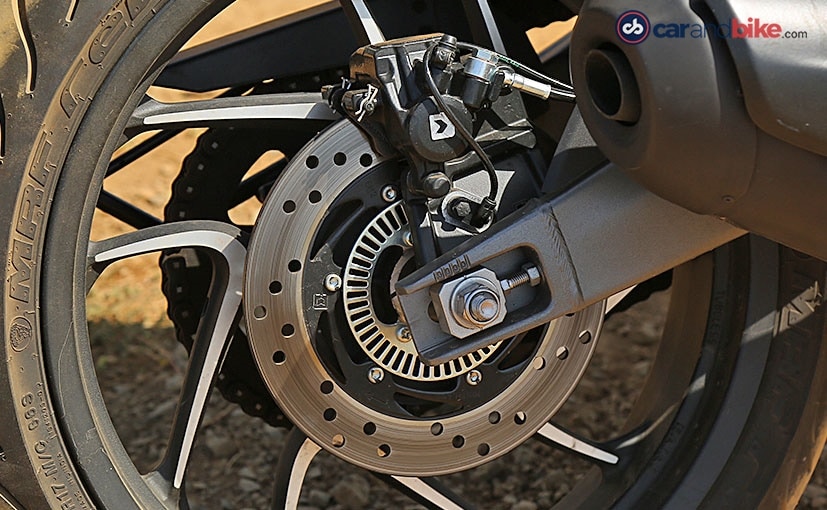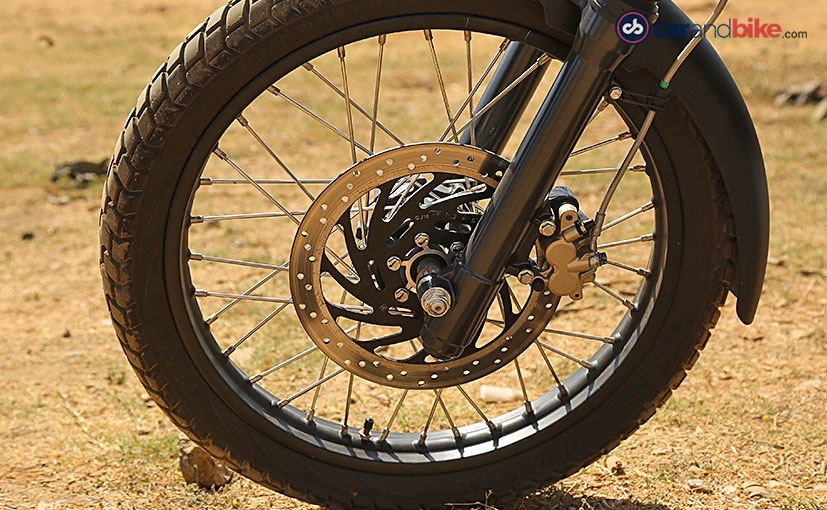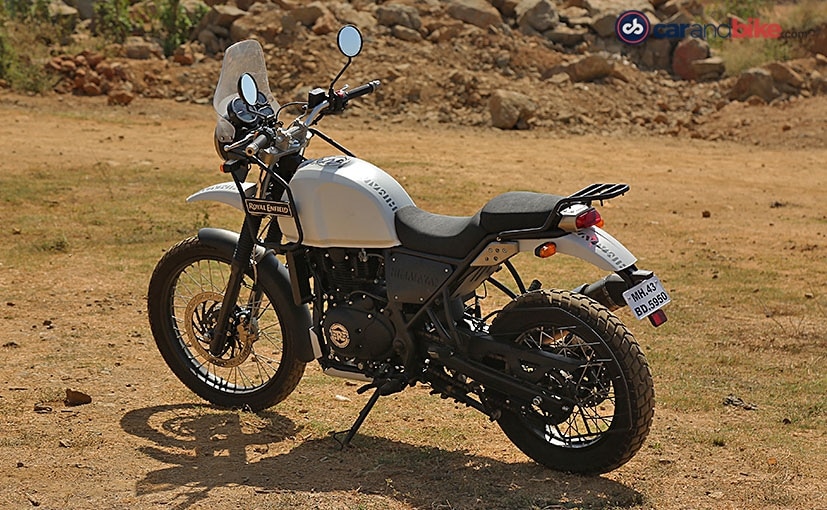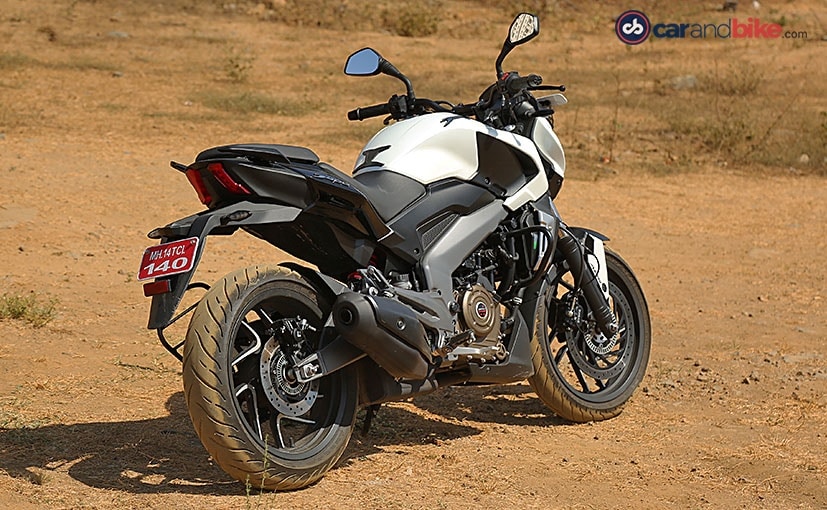Bajaj Dominar vs Royal Enfield Himalayan Comparison
The Bajaj Dominar's LED headlamp looks stunning
In contrast, the Himalayan is unique and certainly different in every way. With the dearth of tourers on our streets, the bike brings in some novelty with its bare bones structure, teardrop fuel tank and slender frame. The rear frame sits higher in keeping with the bike’s off-roading capabilities. The Himalayan sits significantly taller than the Dominar and might seem a little intimidating to a few. It isn’t noticeably Royal Enfield-like either. The lineage is very much present but this one manages to carve out a distinct personality. Yes, the build quality could’ve been better, but if you are making the transition from older REs, the Himalayan will impress.
The RE Himalayan comes with lots of anchoring points
The other part I really like about the RE Himalayan is its purpose-built nature. The steel semi-double cradle frame is utility oriented and comes with anchor points for panniers, jerry cans and other supports. The Dominar isn’t as accommodating in comparison and that makes it slightly restrictive.
The Himalayan's unit looks busy, but is fairly simple to read
The Dominar's console looks nice but remains basic
Ergonomics on both motorcycles are targeted largely at keeping things comfortable for long hours. The Dominar’s wide and contoured seats make it comfortable for both the rider and pillion. The cushioning isn’t the best and will last for two-three hours. The handlebar sits wide on the Bajaj with a certain aggression, while the footpegs are centre set but slightly rear inclined. Meanwhile, the Himalayan offers slimmer seats that are equally comfortable, while the slender fuel tank allows you to stand and ride with ease. The handlebar is tall but won’t tire your arms, while the upright posture keeps you flexible. The Himalayan also comes with motocross styled foot pegs that come in handy when going off tarmac.
The Dominar uses a 373.3 cc SOHC motor with 4 valves
The Himalayan feels underpowered for its proportions
In comparison, the Himalayan draws power from a two valve 411 cc motor fed by a carburetor and throttle position sensor. The simplistic motor is newly developed by Royal Enfield and makes 24.5 bhp at 6500 rpm and 32 Nm of torque available between 4000-4500 rpm. The motor is progressive and gets a throatier exhaust note in place of the trademark thump. Speeds build faster on the Himalayan than older Royal Enfields and a 5-speed gearbox helps transfer power to the rear wheel. The long ratio gearbox allows for lesser gear shifts and when going off-road too, fewer gear changes make for better riding when you stand on the pegs. That said, the Himalayan does feel underpowered and could’ve done with a tad bit more. The gearbox too, albeit not the most precise, is smooth enough in shifts but finding neutral is a concern at times. Nevertheless, the cruising speed is around 80-90 kmph beyond which vibrations creep in. Incidentally, the Dominar has more vibe concerns than the RE.
The Himalayan surprisingly impresses with its handling capabilities
The Dominar's braking prowess is excellent, especially with ABS
In comparison, the Himalayan will just glide over bad roads like no one’s business. The telescopic forks up front come with a long travel of 200 mm, while the single shock setup at the rear has a travel of 180 mm. Now, the soft suspension coupled with the very capable CEAT dual-sport tyres might make you think that the Himalayan would falter around corners; but that isn’t the case. The tall motorcycle is pleasantly agile on bends and the lean angle too is quite impressive. The rigid chassis setup makes its case here and you are less likely to slow down, notwithstanding whether you are on or off-road. That said, the Himalayan isn’t the quickest when it comes to lane changes with the massive 21-inch front tyre being the culprit.
The Himalayan's front brake lacks feedback, rear feels sharp
When it comes to braking performance, the Bajaj Dominar is miles ahead of the Himalayan. The 320 mm disc at the front and 230 mm disc at the rear offers sharp and progressive feedback. The bike stops sans any drama and the pedal offers excellent bite. ABS is offered as standard allowing minimal rear lock. The Himalayan disappoints with its stopping capabilities with the 300 mm front and a slightly larger 240 mm rear disc brake doing duties. The front brake lacks bite and feedback too is minimal, but the rear brake inspires confidence. While this setup may not be ideal for tarmac, it does well off-road and helps you have better control over the front.
The Royal Enfield Himalayan is a no nonsense tourer
The Dominar emerges as a jack of many trades
